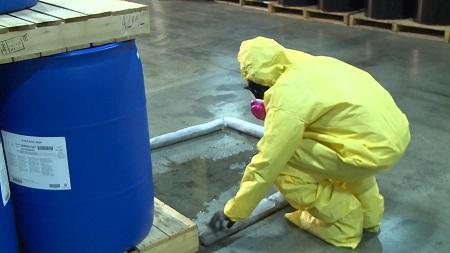Hazardous spills are a potential safety concern in any workplace where hazardous materials are used or stored. These spills can occur as the result of a variety of factors, including accidents, equipment failure, and natural disasters.
When a hazardous spill occurs, it can have serious consequences, including injury or illness to workers and damage to property and the environment. For example, a chemical spill could release toxic fumes that could harm workers in the immediate area, while a fuel spill could ignite and cause a fire.
Because of the potential risks associated with hazardous spills, it is important for employers to have a plan in place to respond to them. This plan should include procedures for identifying and containing the spill, as well as for protecting workers and the surrounding area.
One effective way to prevent hazardous spills is to implement proper storage and handling procedures for hazardous materials. This can help to prevent accidents and reduce the likelihood of a spill occurring. Employers should also conduct regular inspections to ensure that storage and handling equipment is in good working order and to identify any potential hazards.
In the event of a hazardous spill, it is important to act quickly and follow established procedures to contain and clean up the spill. This may involve evacuating the affected area, shutting down equipment, and calling for emergency assistance, if necessary.
In conclusion, hazardous spills are a potential safety concern in the workplace. By implementing proper storage and handling procedures and having a plan in place to respond to spills, employers can help prevent accidents and protect workers, property, and the environment.
Do you need Online Training for Hazardous Spills in the Workplace?
Try a free demonstration of our Hazardous Spills training program, where you can see the full content of the training program and how the system works from the perspective of the trainee:










